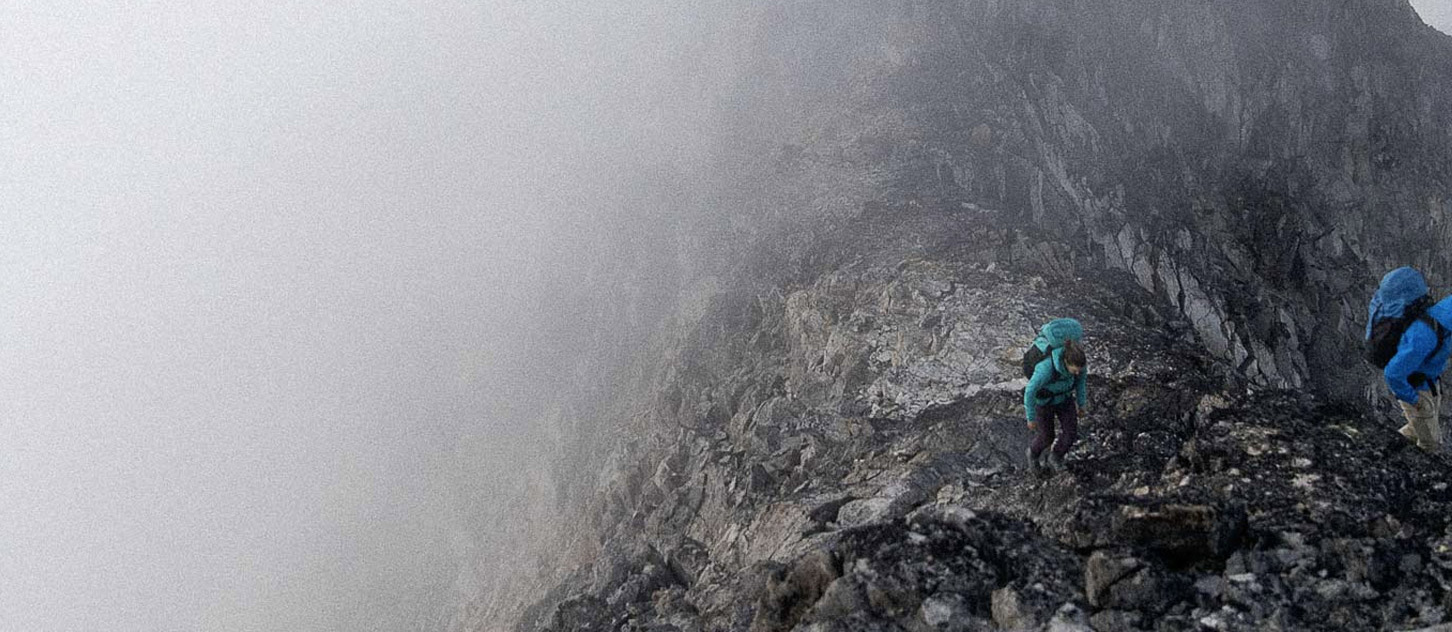
ACMG Mountain Conditions Summary for the Rockies and Columbia Mountains. August 14, 2020.
There have seldom been such widespread good conditions for August in recent memory. In the past week, I have climbed glacier routes, alpine rock, and been hiking. Everything was in good shape.
WEATHER
The only fly in the ointment has been some fickle weather. Although there has been some sun and warmth, especially at lower elevations, there have also been showers and low freezing levels which have given dustings of snow to the peaks.
The coming week looks promising for the most part.
Expect some precipitation overnight Friday and into Saturday morning in both the Rockies and Columbias north of the Trans-Canada Highway.
The Rockies' eastern slopes have the potential for afternoon showers and lightning storms starting early in the workweek.
Otherwise, expect mostly clear weather and gradual warming. Valley bottom temperatures will be reaching into the high 20s in a few days. With the nights lengthening, there should be overnight cooling that will help with early morning snow travel.
CONDITIONS
For someone like me, who cut his alpine teeth in the 80s and 90s, this feels like what an alpine summer should be. For someone whose mountain memory became forged in the new millennium, it may feel like the earth has tilted, and it is hard to accomplish the plans you have made because weather and conditions are unlike recent seasons.
The short story on present conditions is that there are options for all types of activity:
- Hiking trails and scrambling routes are generally snow-free.
- Rock climbing is dry in all areas.
- Alpine rock in all regions has had occasional dustings of snow that clean off within a day or two once it warms up.
- Compared to many Augusts, glacier routes are in exceptional shape, and this is the story of the summer. That said, they are less snowy than they may appear, as light snowfalls have whitened, but not fully covered, bare ice patches and thin crevasse bridges.
The highest peaks still have snow issues. If you head to a technical route above 3000 m where snow is not your friend, anticipate difficult conditions. But on a drive through the Columbia Icefields zone yesterday, I was struck by how good some classic snow/ice and mixed routes looked.
The trick with dealing with a summer like this is to be flexible. Plans made in the spring for the big alpine rock route on an 11er may not be feasible. But ice or mixed routes that might typically be out of the question in August could be doable. Keep an eye on the forecast and hit the climb that makes sense. Last Monday we did a long alpine rock route in hot weather, yesterday we climbed a complex glacier on a near 11er on a day that felt more like October than August. Neither of these routes was on my radar more than a few days in advance.
HAZARDS
For some, the most significant hazard will be encountering conditions that are unanticipated for this time of year. Snow on a technical section of a route or cold temperatures that are more akin to autumn can be dangerous if one is unprepared. Understand that this year may be unlike other summers in your experience. Make judgments using the facts on hand, avoiding biases formed by previous experiences that are not relevant to the present situation.
Other than that, it is the same old. Warming temperatures create lightning storms, induce rockfall, and weaken crevasse bridges, cornices, and snowpacks.
One exceptional note is about slab avalanches. Groups will be starting to venture onto the highest peaks, where the transition to a summer snowpack may still be occurring. A size 3 slab avalanche with a fracture line between 1-2 metres thick was reported on the Kain Face of Mt Robson, triggered by the recent spell of hot temperatures earlier in August. This failed on a weak layer that formed last winter. Expert level snow evaluation is required to make an informed decision on this type of hazard.
OBJECTIVES
This week I am headed for:
- Nearly everything, with the exact objective decided upon based on the 24 to 72-hour weather forecast.
I am avoiding:
- Technical rock climbing on shaded routes, or routes where objective hazards increase with lingering snow, above 3000-3300 m.
- Any route type where risks will increase based on the 24 to 72-hour weather forecast.
Mark Klassen
Mountain Guide